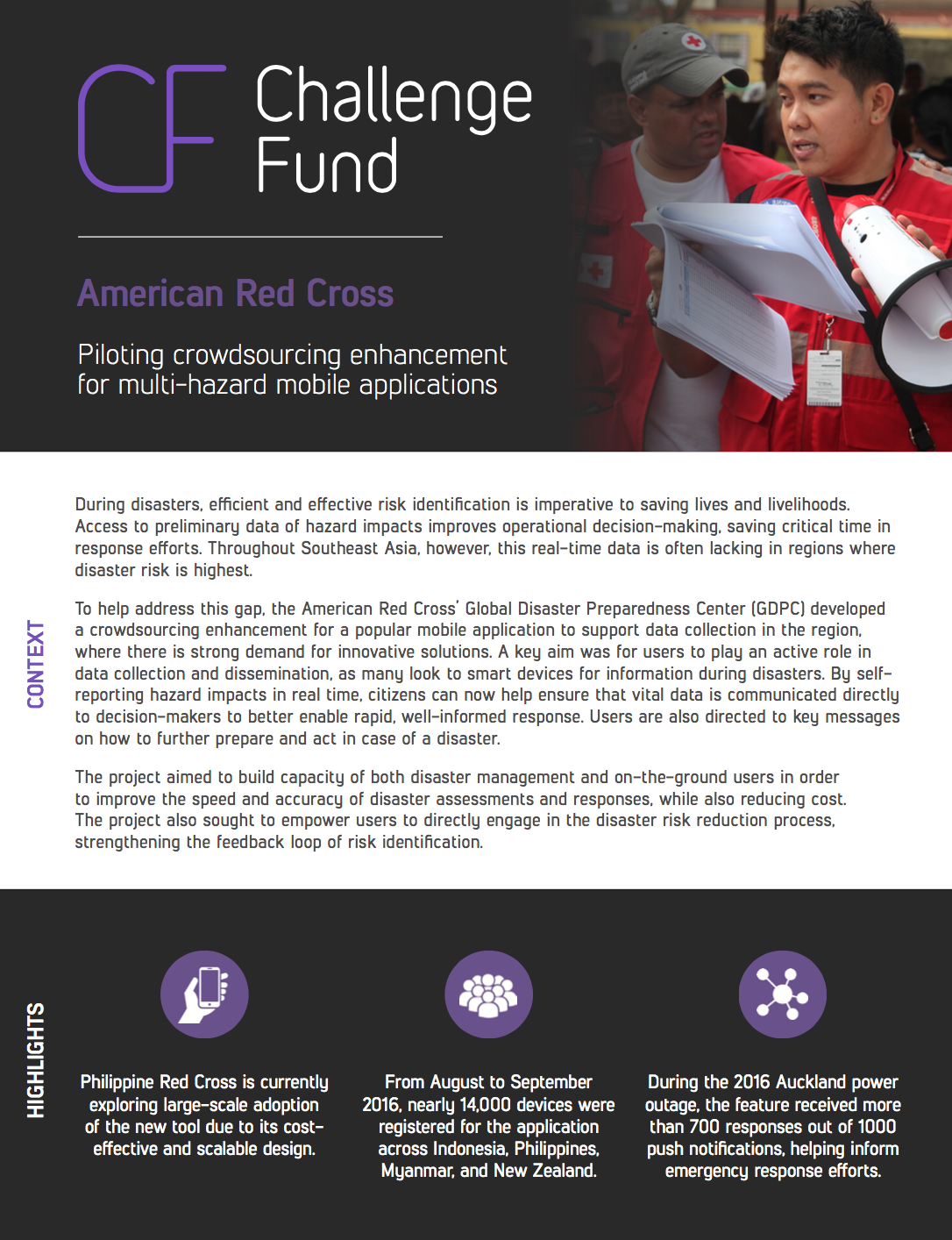During disasters, efficient and effective risk identification is imperative to saving lives and livelihoods. Access to preliminary data of hazard impacts improves operational decision-making, saving critical time in response efforts. Throughout Southeast Asia, however, this real-time data is often lacking in regions where disaster risk is highest.
To help address this gap, the American Red Cross’ Global Disaster Preparedness Center (GDPC) developed a crowdsourcing enhancement for a popular mobile application to support data collection in the region, where there is strong demand for innovative solutions. A key aim was for users to play an active role in data collection and dissemination, as many look to smart devices for information during disasters. By self-reporting hazard impacts in real time, citizens can now help ensure that vital data is communicated directly to decision-makers to better enable rapid, well-informed response. Users are also directed to key messages on how to further prepare and act in case of a disaster.
The project aimed to build capacity of both disaster management and on-the-ground users in order to improve the speed and accuracy of disaster assessments and responses, while also reducing cost. The project also sought to empower users to directly engage in the disaster risk reduction process, strengthening the feedback loop of risk identification.

